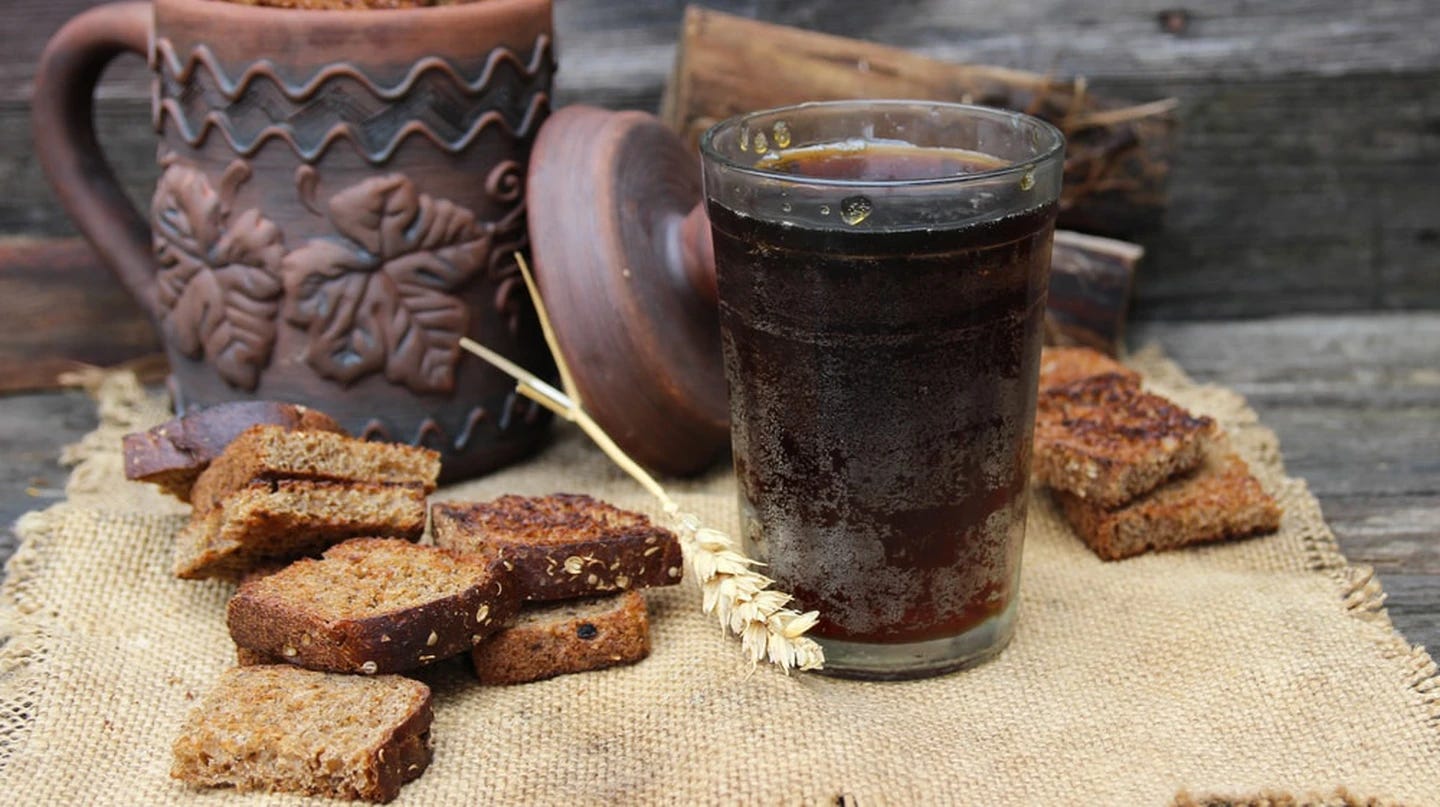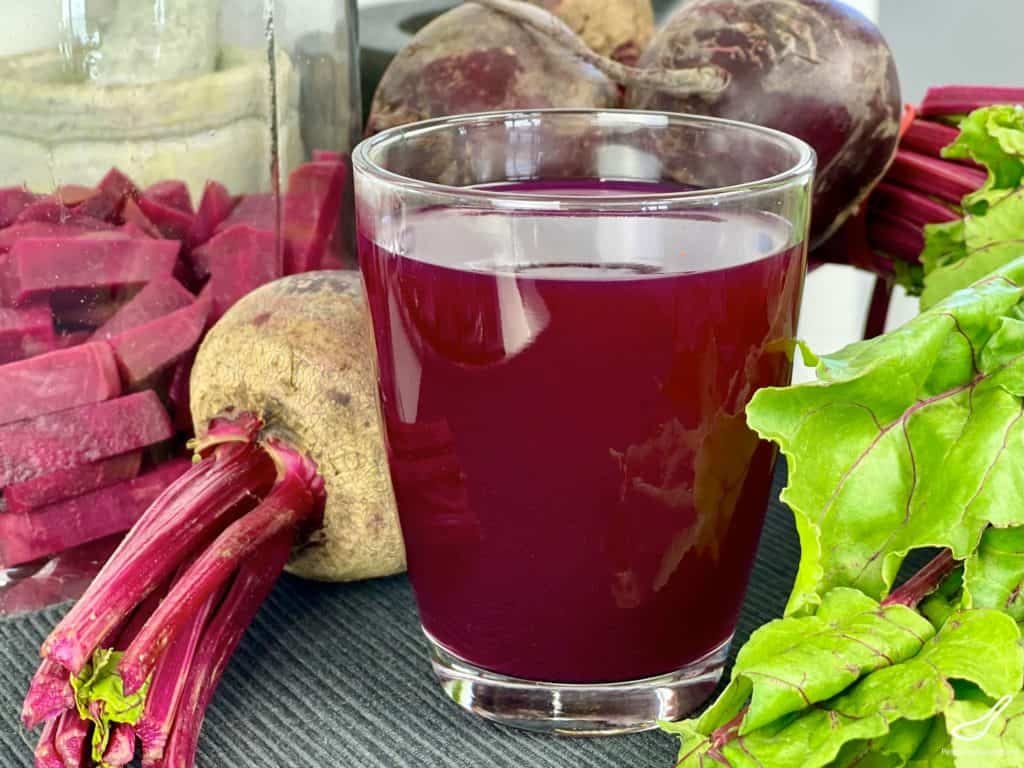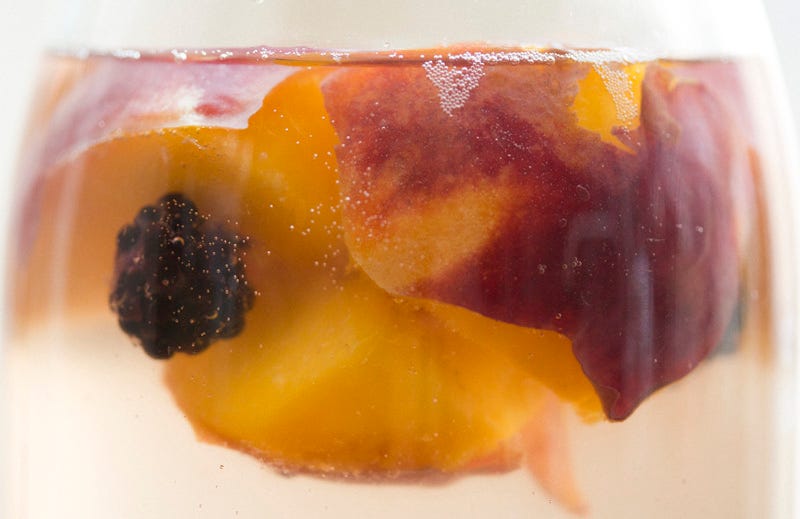Kvass - Guess where this fermented beverage comes from!
This sparkling, sweet and sour drink is from eastern Europe. You may have guessed from its Russian-like pronunciation.
Hi all, this time I choose to pick a beverage as it can also be fermented, and I know it won’t suppress your hunger, but at least you won’t be thirsty anymore, and it’s very important to stay hydrated ;)
Why to write about kvass?
It is not a popular drink, as wine, beer or cider are, so hopefully you’ll learn something new here! But in eastern Europe is it actually very popular, so much so that Coca-Cola invested in a production line in Ukraine to launch its own Kvass brand in eastern Europe. And making this at home is quite easy and can done off the cuff compared to other home fermented drinks such as kefir or kombucha where you need to find a starter first.
Finally it’s a great way to reuse that stale piece of bread that you left on the counter for a little too long. Zero waste! :)
What is it?
Kvass means “to ferment” in Slavic, very creative for a fermented drink isn’t it?
It is usually made mainly from rye bread and maybe some fruits or herbs to add extra flavor. It is a bit sparkling, depending if the pressure was held during fermentation or not, and is considered as non-alcoholic even though is may reach 1% alcohol from the sugar being broken down by bacteria.
How is it made?
The industrial way of doing
Large producers are basically fermenting a mixture of flour, malt, sugar and water. For your information, malt is made by germinating and then roasting cereals. As manufacturers are looking for consistency in their final product, they control the fermentation process by introducing a starter made from yeast and lactobacillus bacteria to undergo a lactic acid fermentation. The fermentation of kvass is faster than most alcoholic beverages, it only takes about 3 weeks at 20-25°C when beer and wine can take one or two weeks. That also explains why kvass contains so little alcohol.
The traditional way
As always there has been some adaptation from the traditional recipe to the industrial one. When people home brew their kvass, they use toasted rye bread that they soak for 8H to 1 full day into a boiling mixture of water and 10% sugar in volume.
This step will release the carbohydrates (carbs) from the bread into the water and will later be used as a source of energy by bacteria, in addition to sugar.
Also toasting the bread will create similar flavors than the malt used in the industrial process.
Then they strain the liquid into a bottle and add any flavoring like raisins (that will also bring bacteria lying on their skin to help ferment), mint, ginger… Some add dry yeast, but it’s not necessary as long as there is another source of bacteria. Dry fruits are a good starter for that.
In about 3 days your kvass will be ready to drink! But you should adjust the fermentation time to your own taste.
The beet kvass variant
A popular variant of that recipe is with beetroots. The process has nothing much to do with the bread kvass, buuut it’s also called Kvass… The taste will be quite different as this recipe involves salt.
Basically this recipe is fermenting diced raw beets in a 0.5-1% salt brine. No need to add sugar as the beet is naturally sweet. And after 2 - 3 days you have your beautiful red kvass! Enjoy :)
What’s the fermentation going on here?
This drink is mainly fermented thanks to lactic acid bacteria. These bacteria are involved in a lot of fermentation such as yogurt, vegetables, and sourdough. In the traditional recipe the micro-organisms come from either the dry yeast powder, or the dry fruits. And in the beet kvass it comes directly from the beetroot as it is raw and still have plenty of bacterial on its surface.
Why rye bread?
Rye has a higher carbohydrates content than wheat bread, but any kind of bread will do as its only purpose is to bring carbs to the drink.
How was kvass used at that time?
Kvass was a daily drink for the Slavic people since the 10th century. As it is made from bread leftovers, it was an affordable drink. In this region of the world, people couldn’t afford to make beer as it required more cereal that was quite scarce and used in priority for eating.
It was really a beverage that everybody, especially the poorer could afford. Some of them got very creative with it and made other dishes like soups based on kvass!
It was so widespread and most of the time home brewed, that is lead to a whole variety of kvass. Records show there was more than 150 kvass varieties at the time, such as apple, pear, mint, lemon, chicory, raspberry and cherry kvass!
Here we go, now you have a fair bit of ideas to try on :)
Thank you to for reading this post, I hope you learned few things about this popular and affordable drink!
If you enjoy the content I create, I’m sure you can think of one person who would be interested also. Feel free to share this post to that person :)







